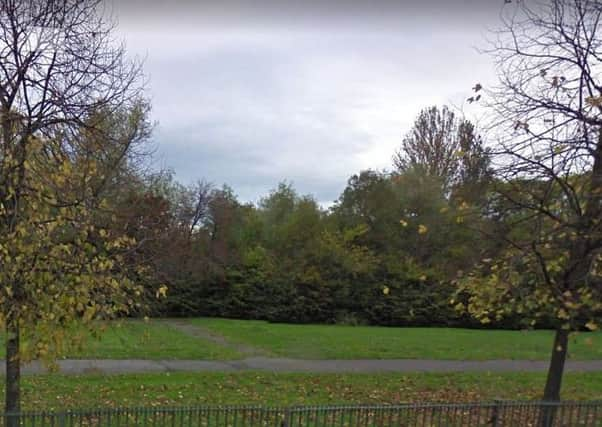Waterway in Scottish park sealed off after cancer chemical found


Environmental experts were alerted after water in the Polmadie Burn, which runs through Richmond Park on the south bank of the Clyde in Glasgow, turned bright green.
Inspectors from the Scottish Environment Protection Agency (Sepa) sealed off the waterway after tests revealed high concentrations of hexavalent chromium in the water.
Advertisement
Hide AdAdvertisement
Hide AdExposure to hexavalent chromium increases the risk of lung cancer, asthma, kidney and liver problems and irritates the skin and eyes.
Decontamination has been ongoing in the area for years to rid it of potentially hazardous industrial chromium left in the ground by the former J&J White’s Chemical Works, which operated in Rutherglen from 1820 until 1967.
Waste product in the form of chromite ore processing residue was used to back-fill old clay pits in the area, resulting in a legacy of contamination.
Temporary metal fencing has been erected around the burn amid warnings from environmental health officers the site posed a potential risk to public health.
It is understood a permanent fence will be erected by housing developers.
Investigations established that the Polmadie Burn was becoming contaminated with chromium flowing into it from nearby West Burn Culvert Diversion, which is routed underground and passes through the site of some of the back-filled pits.
To deal with the problem, last month the culverted West Burn was diverted, carrying contaminated water into the River Clyde where it becomes diluted enough not to pose a public health risk.
However, Sepa believes that the current contamination of the Polmadie Burn has occurred because the time of the West Burn diversion coincided with a dry period.
Advertisement
Hide AdAdvertisement
Hide AdThe residual water which flowed into the Polmadie Burn would have had higher than normal concentrations of chromium in it.
A spokesman for Glasgow City Council said: “Following a site visit last week and confirmation about the temporary high concentration of hexavalent chromium in the Polmadie Burn, Heras fencing has been put in place to restrict public access and there is an agreed proposal to temporarily increase the flow of the burn, in a controlled way, to dilute the level of chromium.
“Sepa expect that the majority of the chromium that used to get into the Polmadie Burn has now stopped but until the abandoned West Burn culvert is fully sealed, some contamination from the groundwater may continue to get there but in much smaller volumes than before.
“The reduced dilution in the Polmadie Burn is making the contamination look more concentrated, so for now it looks worse.
“Once the abandoned culvert is fully sealed, and is no longer acting as a pathway, Sepa expect to see the colour gradually disappear and that heavy rainfall would speed this up considerably.”
A spokesman for Oatlands Community Council said: “The community council are aware of the ongoing issues with the Polmadie Burn, all relevant authorities have been informed, including Sepa and Glasgow City Council.
“Our intention is to work closely with these parties to ensure there is no risk to public health.”
ENDS
